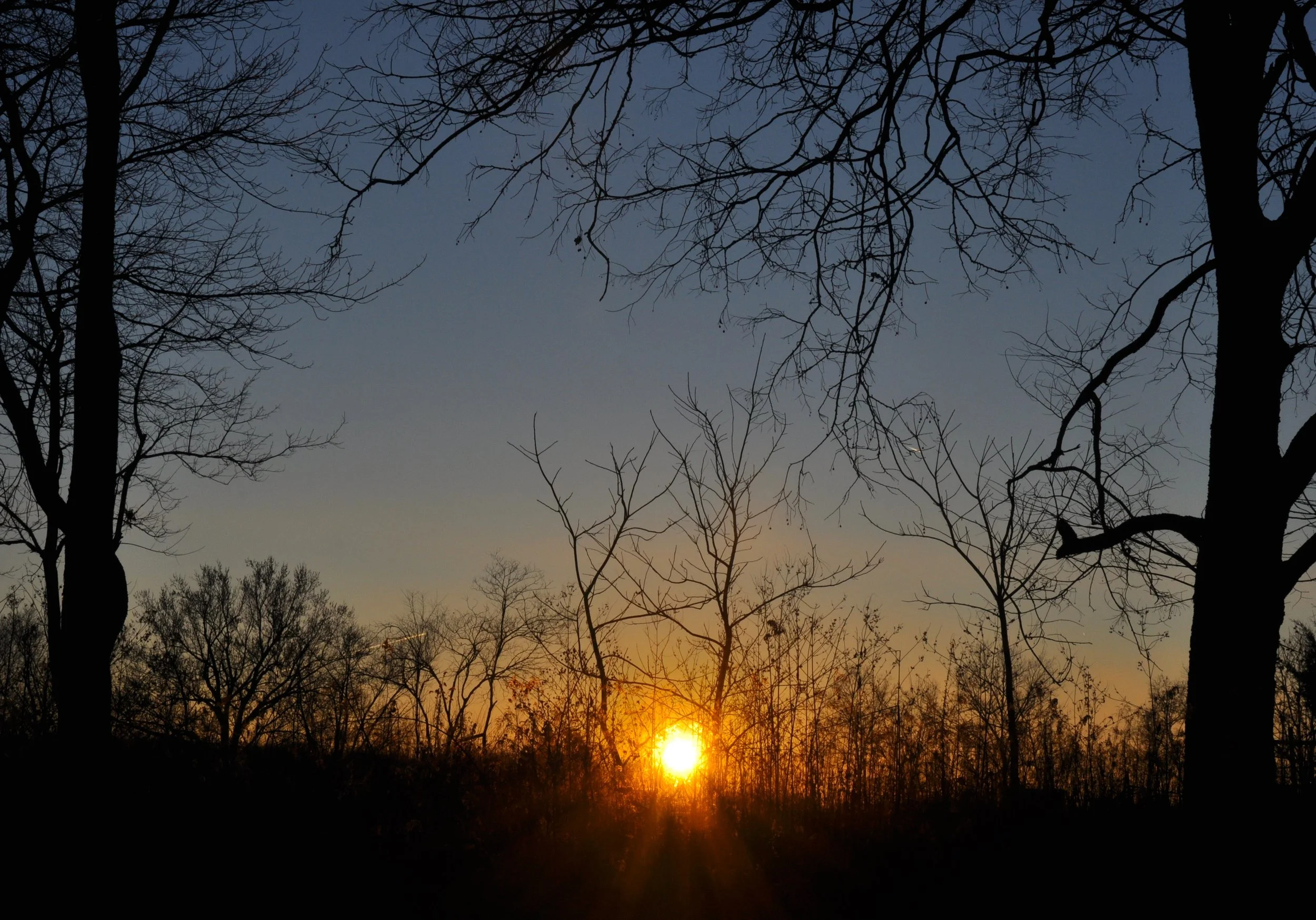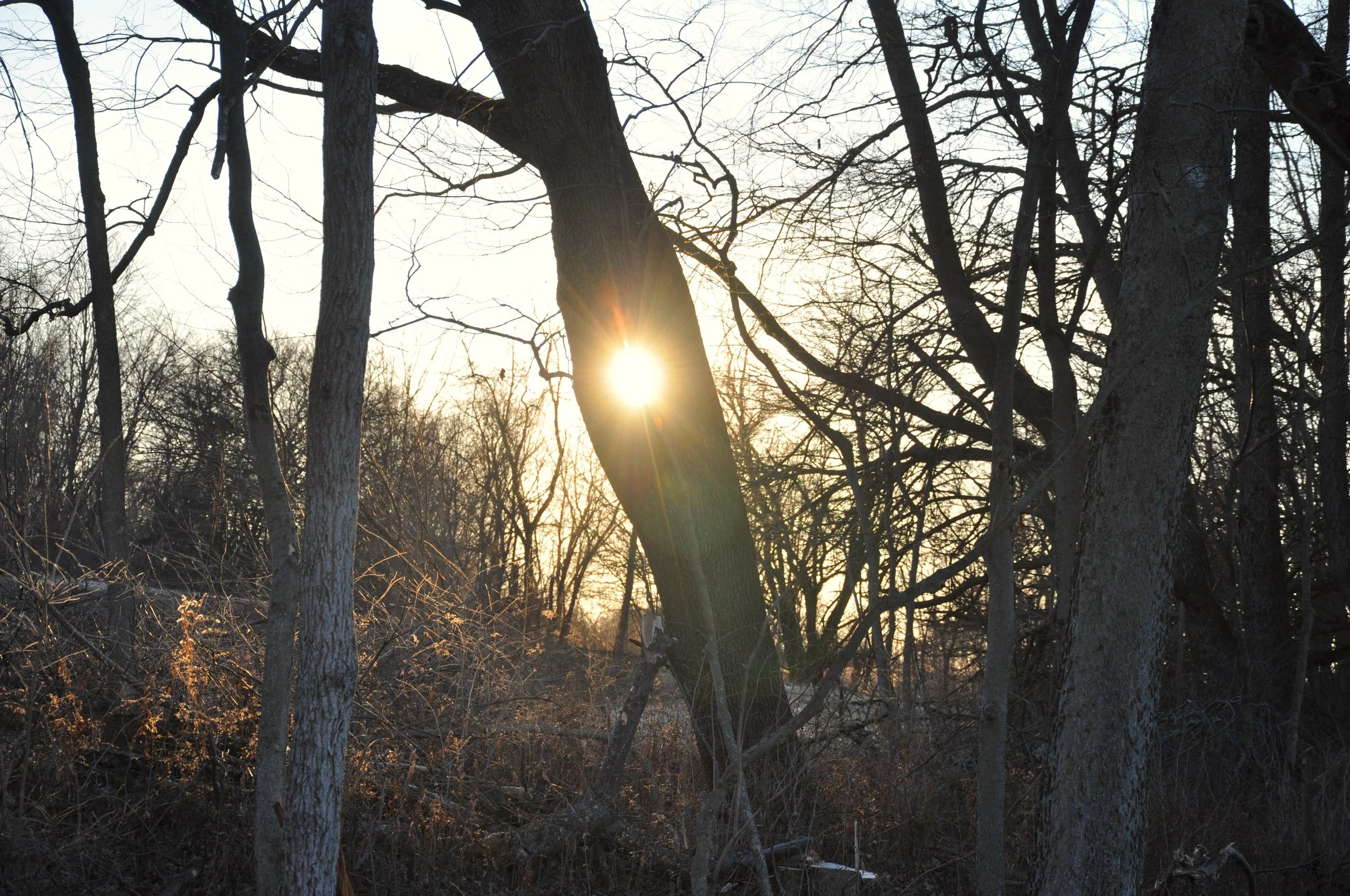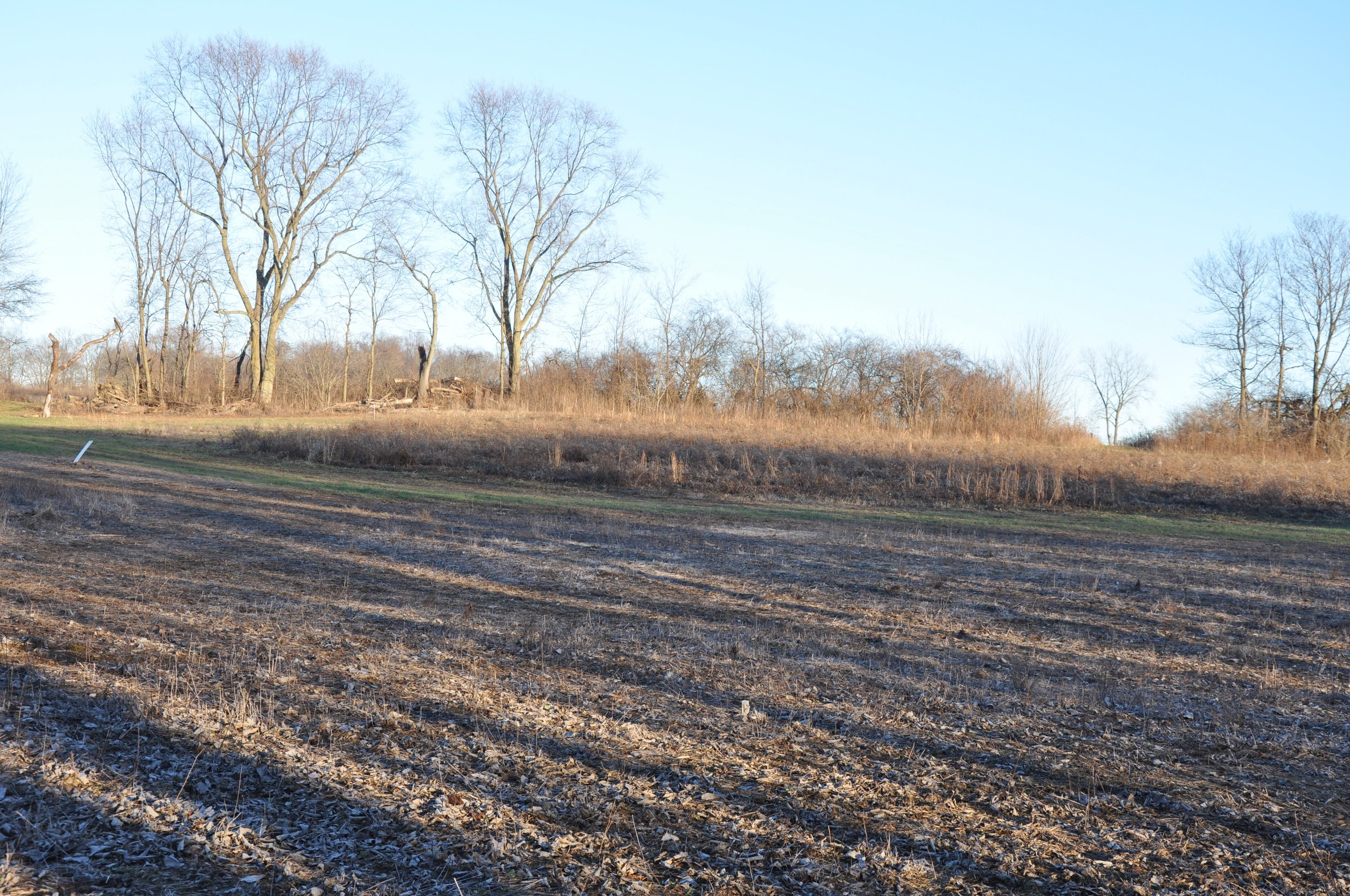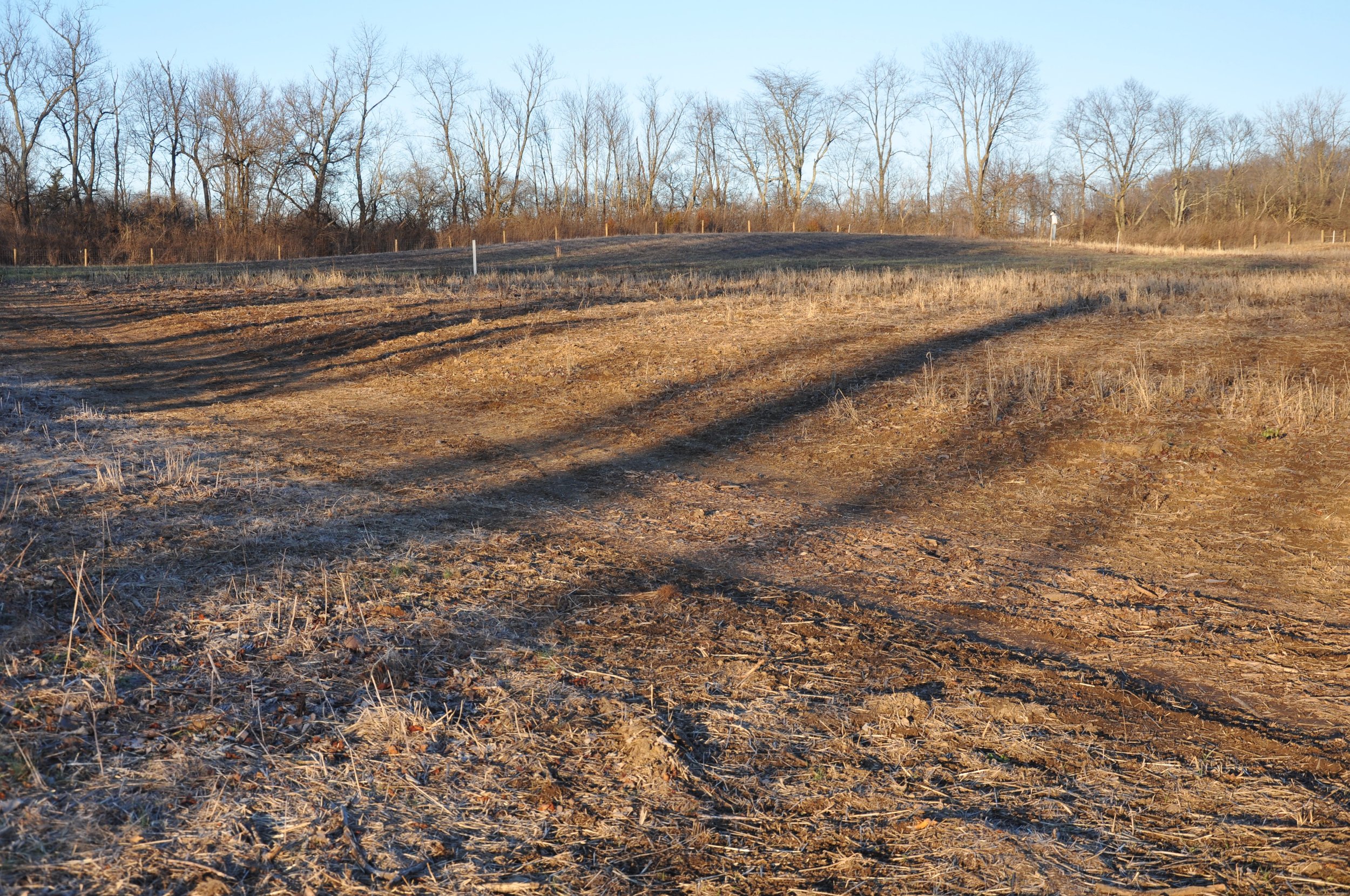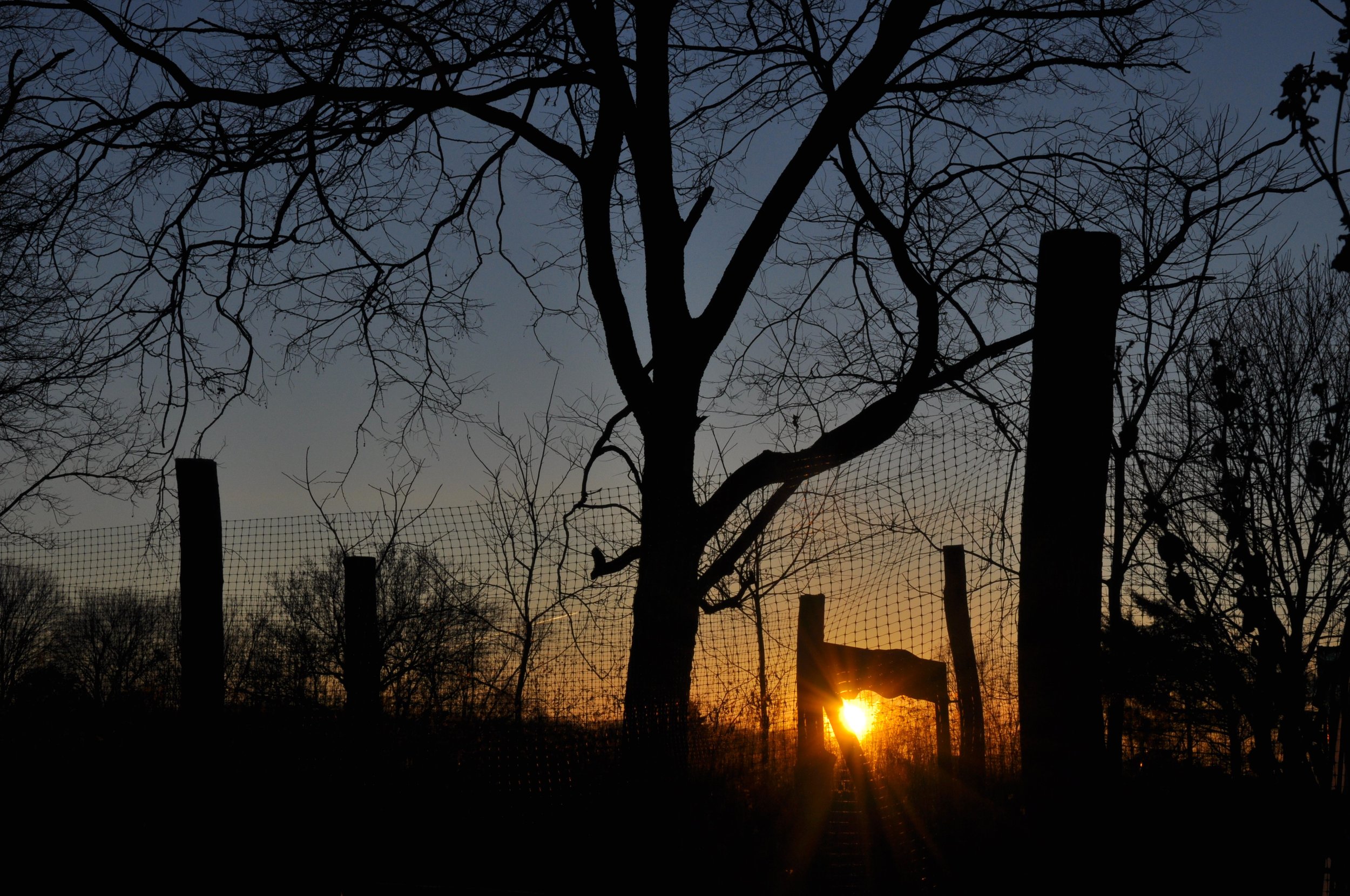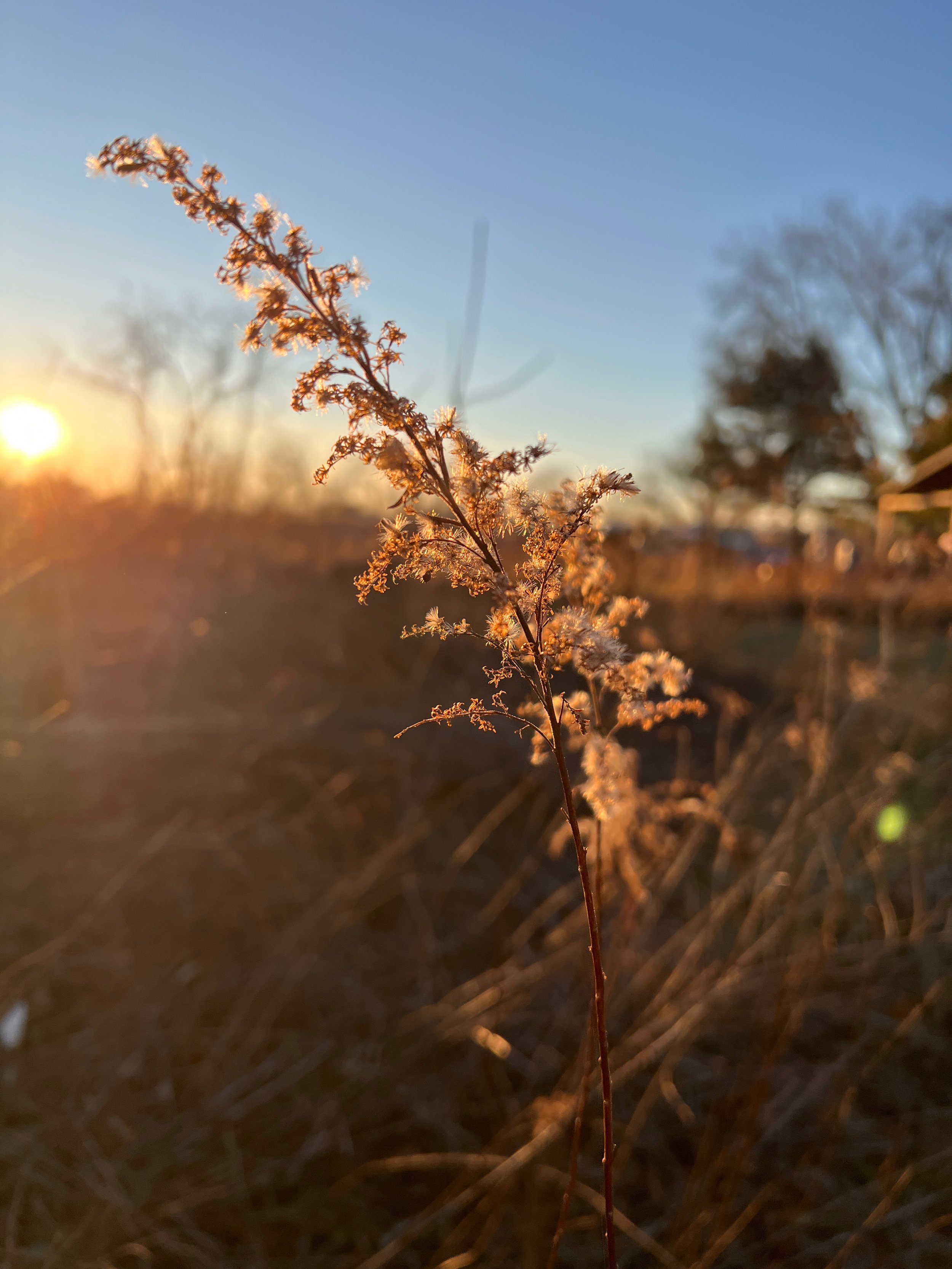Winter Solstice: Encountering the Darkness
Setting sun at Agraria, the Eve before Winter Solstice 2022. (Photo by Audrey Hackett)
By Audrey Hackett
Let us now praise the darkness.
Some call this the shortest day of the year. I call it the longest night. The sun will set at 5:14 this Winter Solstice evening and rise tomorrow morning at 7:53. That’s fourteen-and-half hours of night — just the right amount, I think, to begin to adjust my eyes to the darkness.
What’s visible in darkness? Mostly, what’s not visible by light, by sight. In darkness, seeing proceeds tentatively, like a hand groping for a chair or wall. This is not how seeing prefers to transact its business with the world. Humans are predators, in part, and the proof is in our staring-ahead eyes, our eyes that pierce the air like arrows and seek to pin down what we find. Seeing likes clarity; it not only uses the light, but imagines itself to be the light, bringing things into focus and understanding — into enlightenment.
In darkness, seeing withdraws, as we ourselves do this time of year, and the inner eye opens. By its gauzy gaze, its reversed sight, new truths take shape. Or, oddly yet accurately, new shapes take truth. That is, what we’re used to seeing looks different — or doesn’t “look” at all, as something deeper and more essential comes to our notice. The poet Rainer Maria Rilke used the term “inseeing” to describe, as one writer explains it, “the wondrous voyage from the surface of a thing to its heart, wherein perception leads to an emotional connection.” In darkness, this form of seeing bypasses the eyes and develops in slowness by other means. We see with our hearts in the dark. And what we see, if we open and loosen ourselves into it, is other hearts.
In darkness, the Great Horned Owl is audible. Who who who WHO who, he says, or words to that effect. It’s both different and the same every time. Awake in bed after midnight, I try to “insee” his presence. Miracle of miracles, his very word, in my dialect, guides me, as if touching my elbow to steer me in the dark. Who, he says. Not a question, but a standing statement. A statement near to taking silent flight. For the Great Horned Owl is the voice (or perhaps the pulse) of a world that takes a different shape of truth in the dark. The world, his voice or pulse tells me, is a “who,” not a “what” — a world of being, not thing.
This truth is more approachable in darkness.
The lowering sun “threading the needle” of a fused tree trunk. (Photo by Audrey Hackett)
A few years ago, a neighbor in Yellow Springs, knowing my love of winter darkness, lent me a book called Waking Up to the Dark, by Clark Strand. The book is a call to turn out the lights — literally, in order to dim the too-bright light of ego consciousness that in his estimation is damaging beyond repair Earth’s web of life. Turn out the lights, and you decenter human consciousness. You open yourself to the world of other beings and the world of the ancestors, not just the human dead, but the dead of all species across all time.
One portion of Clark’s book records a mystical encounter with darkness itself — with darkness as a “who.” Once you have read this, if your longings lean in its direction, you might find yourself never again alone in darkness.
And so it was that last evening, on the Eve before the Winter Solstice, I sought to welcome the darkness to Agraria. May I confess I did so wielding a tool of sight, a dazzlingly powerful camera, which I pointed at the setting sun and the brushstrokes of darkness it set upon the land? I pointed my eyes and my camera-eye right into the light until blue dots stippled my sight, like a dream-map of a secret place I’m always trying to get to.
The sun was deep in the southern sky, rolling like a blazing marble in a great groove to the western horizon. Let me not pretend: I felt drawn to it, as if pulled by the “biggest magnet there is,” as mystic poet Rumi says of the Divine. I wanted, just a little, for it to take me into its chariot and blind me with perfect sight.
Yet I also felt the subtler tug of the cobalt sky, darkening around the edges as if by smoke, and the black filigree of the winter trees, their essential mystery. The essential mystery of everything, which even our sun in its 4.6 billion unbroken years of radiance has yet to penetrate. I thought about the newest news from the world of science that researchers have made energy from fusion, emulating, yes, our sun. Does this herald consequence-free, “limitless” energy sometime in the future, or just more — more and more and more — human light?
With the land layering its veils of shadow into the longest night, with little birds quieting in the thickets, with the orange sun sinking, I felt a tiny flutter of hope that darkness might, even now, save us. That the mystery that contains us might somehow constrain us. That we might learn to see by the light of the dark.
Let us now praise the darkness.
*Audrey Hackett is associate editor of Agraria Journal.
Read another reflection on light and dark from Agraria’s Maureen Fellinger here.
Left to right: Shadows set upon the land; sun setting behind the new Native Plant Nursery; goldenrod, golden sun (last photo by Amy Harper)

